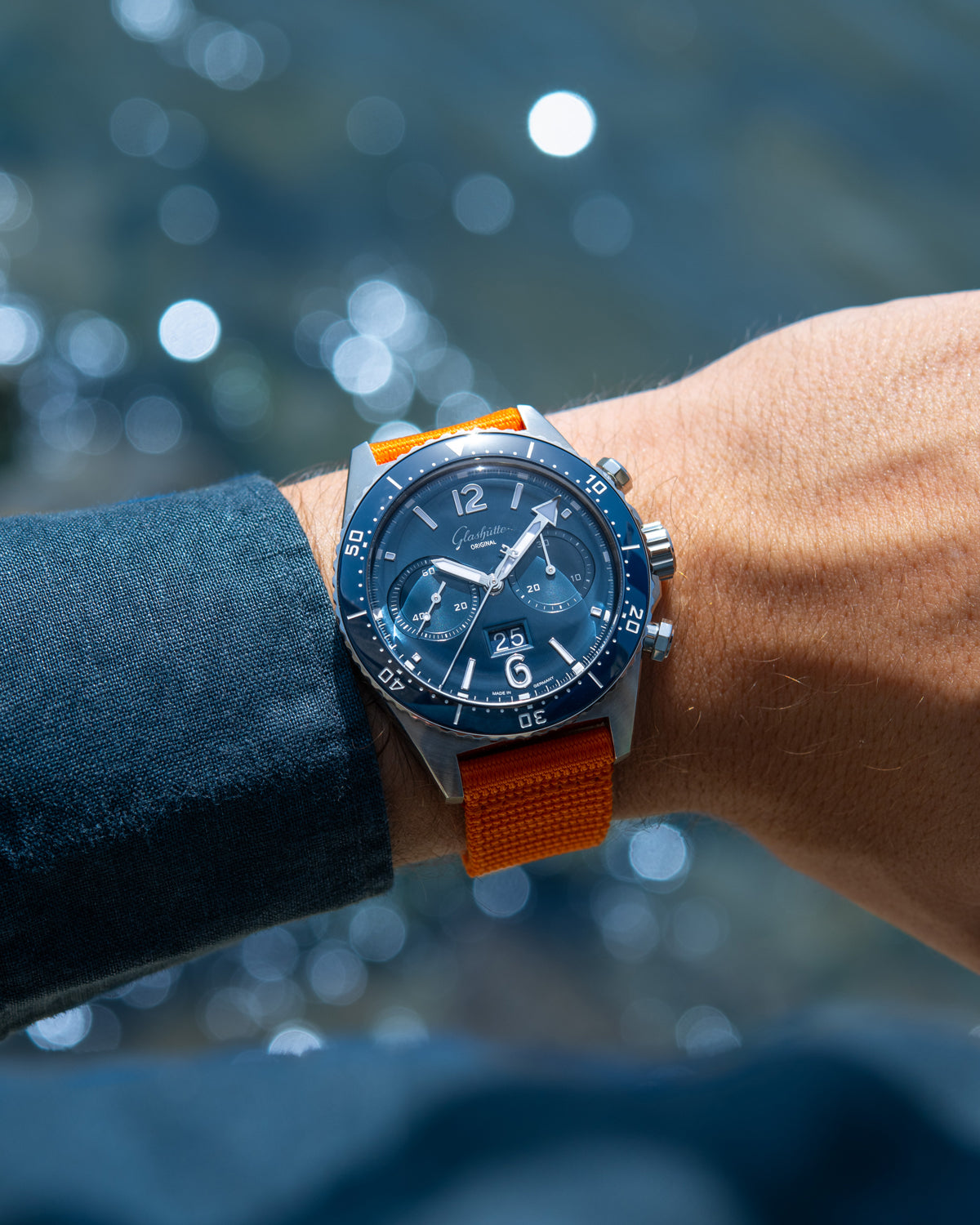Automatic watches represent one of the pinnacle of mechanical ingenuity applied to watchmaking. Elegant, complex, and captivating, these timepieces have won over collectors and enthusiasts thanks to their ability to operate without batteries, relying exclusively on the energy generated by the wearer.
Understanding how an automatic watch works means discovering not only the technical sophistication behind its movement, but also the cultural and aesthetic value that makes it a timeless symbol of Swiss and international watchmaking tradition.
What is an automatic watch?
An automatic watch is a mechanical timepiece with a self-winding mechanism , distinguished by its ability to store energy through the movement of the wrist. Unlike quartz models, which are battery-powered, or mechanical watches with manual winding, automatic watches use an internal oscillating weight – called a rotor – that rotates with every movement of the arm, transmitting energy to the mainspring .

How does an automatic watch work?
The operation of an automatic watch is based on the transformation of kinetic energy into mechanical energy . When the wrist moves, the rotor—a small metal semicircle mounted on a pivot—rotates freely. This movement generates the winding of the mainspring, which stores the energy needed to power the movement.
The stored force is gradually released to the gear train, which transfers it to the escapement. The escapement regulates the release of energy through constant oscillations of the balance wheel, determining the precision of the displayed time. This is a continuous and harmonious process, allowing the watch to function autonomously without any external intervention, as long as it is worn regularly.
How automatic watches work: a detailed look at the components
The functioning of an automatic watch is based on a set of highly specialized mechanical components:
-
Rotor : oscillating element that uses the movement of the wrist to generate energy;
-
Mainspring : stores the energy produced by the rotor and releases it progressively;
-
Gear train : transmits energy from the mainspring to the escapement;
-
Escapement : regulates the release of energy in constant pulses;
-
Balance wheel : the beating heart of the watch, responsible for the precision of its oscillations.
The harmony of these components, working in unison, allows the automatic watch to keep time with regularity, embodying the engineering perfection typical of fine watchmaking.
Automatic watch operation: how to charge it?
Automatic watches are wound by the movement of the wrist, but they can also be wound manually using the crown , especially when not worn for a few days. Under everyday use, the simple act of moving the watch is enough to keep the movement running.
The power reserve varies depending on the caliber and the brand : on average, it ranges from 38 to 72 hours, but in premium models it can exceed 5 days. It's important to note that an automatic watch is not damaged if wound manually, as long as the operation is performed delicately and without excess , respecting the limits of the mechanical movement.
Automatic vs. Manual Watch: What's the Difference?
The main difference between an automatic and a manually wound watch lies in the way energy is stored . In manual models, the mainspring must be periodically wound by turning the crown, while in automatic watches the rotor performs this function autonomously.
Manually wound watches are often prized by purists for the ritual of daily winding, which creates an intimate bond with the object. Automatic watches, on the other hand, offer greater convenience and continuity of operation, reducing the need for frequent maintenance. Both typologies represent two philosophies of watchmaking.
Automatic watch stopped: is it at risk of damage?
When an automatic watch is not worn for a prolonged period, the mainspring unwinds and the movement stops . This does not cause immediate damage to the mechanism, as the gears simply remain inactive. However, a lack of lubrication due to prolonged inactivity can reduce the efficiency of the movement in the long term.
To overcome this problem, many enthusiasts rely on watch winders , devices designed to keep automatic watches moving even when they're not being worn. These tools simulate the movements of the wrist, ensuring the mechanism remains lubricated and ready for use.
Automatic watches available on Pisa 1940
Automatic watches represent a unique combination of art and technology , blending aesthetics, tradition, and mechanical innovation. Understanding how an automatic watch works allows you to appreciate its refinement and understand its intrinsic value, which goes far beyond simply measuring time.
There Pisa 1940's selection includes a wide range of automatic watches from the most prestigious international brands, designed to satisfy the needs of the most demanding collectors and enthusiasts of fine watchmaking.


